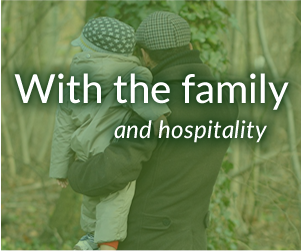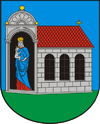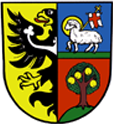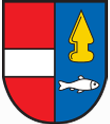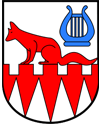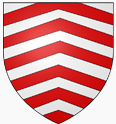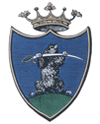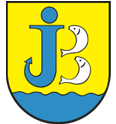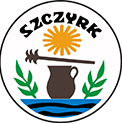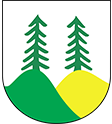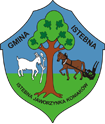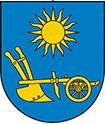About Wisła
Attractively situated at the source of the Wisla River, and surrounded by beautiful forests on nearby mountain slopes, Wisla is the perfect holiday destination for those either seeking relaxation or seasonal sports. Known as the Pearl of the Beskid Mountains, it has several landmarks, numerous comfortable pension houses, and many places to eat. During recent years the city has gained fame as the hometown of Adam Malysz, Poland’s most successful ski-jumper, whose sporting achievements has eclipsed the fame of other Wisla-born luminaries.
TOURISM
This scenic town and its environs create a number of opportunities for active relaxation. The close proximity of other interesting locations like Ustron, Szczyrk and the triple village of Istebna-Koniakow-Jaworzynka makes Wisla an ideal base for walking excursions (lots of marked paths run through the city and around it). One walking trip really worth taking goes through a deep gorge to Kaskady Rodla, the famous waterfalls on the Biala Wiselka River.
Another experience awaiting you in Wisla is cycling along the relatively flat mountain ridges – there are many miles of bike trails and plenty of paths to follow. For the winter sports enthusiast, the city offers access to a number of well-maintained ski-lifts. In fact, throughout the summer and winter months Wisla bustles with life, and the restaurants, bars and cafes add to the colour of the place.
Apart from sports and recreational activities, the city has some interesting attractions that include the Museum of Beskidy; the Protestant church; the Catholic Church with its old cemetery; the Habsburg’s Hunting Castle; and the President’s Castle, which used to be visited by the Polish president Ignacy Moscicki (he held the office in the years 1926-1939). And when you are tired of being so active, just relax and immerse yourself in the stylish resort atmosphere that Wisla exudes.
GEOGRAPHY
Wisla is a town in southern Poland, close to the border with the Czech Republic and Slovakia. It is situated 431 meters above sea level in a picturesque, 15 km long valley of the Vistula (Wisla in Polish) River, that queen of Polish rivers from which the town took its name. Surrounded by mountains with elevations of between 640 and 1221 m, to the west Wisla is hemmed in by the Czantoria mountain range. Geographically it belongs to Beskid Slaski region.
The town has a total area of over 110 km2 and a population of approximately 11,000. Approximately 75% of its territory is covered by Wisla’s most valuable natural resources - its forests. These are protected for ecological and tourist purposes.
HISTORY
The town of Wisla was firstly mentioned in writing in 1615 in the books of the Cieszynska Chamber. The first signs of interest in the town as being close to the source of the Vistula River began towards the end of the 19th century. Around the same time the town’s advantages as a holiday location were noticed and in 1915 Wisla was designated as a summer resort by the national government. Numerous villas were built in Wisla, some intended to be pensions.
In the years of the Second Republic of Poland (1918-1939), Wisla grew quickly as a fashionable holiday destination. Roads and a railway to Glebiec were constructed and the river was regulated. The city centre (which today has a park, a spa with restaurant, a library, a swimming pool and tennis courts) was rebuilt and expanded. Some of the buildings that underwent major renovation include the Chapel House, the sanatorium on Kubalonka and the President’s Castle on Zadni Gron. A union of pension owners was created at this time, along with a Collective Bank, a Beekeepers Union and a folk-band.
The years following World War II saw the further rapid development of Wisla as a holiday resort and leisure centre – especially after the supply of gas and electricity to the town and the arrival of the railway and highway from Katowice, a medical centre with a nursery and veterinary clinic and a number of new boarding-houses. Yet it was not until 1962 that Wisla was granted civic rights.
TOURISM
This scenic town and its environs create a number of opportunities for active relaxation. The close proximity of other interesting locations like Ustron, Szczyrk and the triple village of Istebna-Koniakow-Jaworzynka makes Wisla an ideal base for walking excursions (lots of marked paths run through the city and around it). One walking trip really worth taking goes through a deep gorge to Kaskady Rodla, the famous waterfalls on the Biala Wiselka River.
Another experience awaiting you in Wisla is cycling along the relatively flat mountain ridges – there are many miles of bike trails and plenty of paths to follow. For the winter sports enthusiast, the city offers access to a number of well-maintained ski-lifts. In fact, throughout the summer and winter months Wisla bustles with life, and the restaurants, bars and cafes add to the colour of the place.
Apart from sports and recreational activities, the city has some interesting attractions that include the Museum of Beskidy; the Protestant church; the Catholic Church with its old cemetery; the Habsburg’s Hunting Castle; and the President’s Castle, which used to be visited by the Polish president Ignacy Moscicki (he held the office in the years 1926-1939). And when you are tired of being so active, just relax and immerse yourself in the stylish resort atmosphere that Wisla exudes.
GEOGRAPHY
Wisla is a town in southern Poland, close to the border with the Czech Republic and Slovakia. It is situated 431 meters above sea level in a picturesque, 15 km long valley of the Vistula (Wisla in Polish) River, that queen of Polish rivers from which the town took its name. Surrounded by mountains with elevations of between 640 and 1221 m, to the west Wisla is hemmed in by the Czantoria mountain range. Geographically it belongs to Beskid Slaski region.
The town has a total area of over 110 km2 and a population of approximately 11,000. Approximately 75% of its territory is covered by Wisla’s most valuable natural resources - its forests. These are protected for ecological and tourist purposes.
HISTORY
The town of Wisla was firstly mentioned in writing in 1615 in the books of the Cieszynska Chamber. The first signs of interest in the town as being close to the source of the Vistula River began towards the end of the 19th century. Around the same time the town’s advantages as a holiday location were noticed and in 1915 Wisla was designated as a summer resort by the national government. Numerous villas were built in Wisla, some intended to be pensions.
In the years of the Second Republic of Poland (1918-1939), Wisla grew quickly as a fashionable holiday destination. Roads and a railway to Glebiec were constructed and the river was regulated. The city centre (which today has a park, a spa with restaurant, a library, a swimming pool and tennis courts) was rebuilt and expanded. Some of the buildings that underwent major renovation include the Chapel House, the sanatorium on Kubalonka and the President’s Castle on Zadni Gron. A union of pension owners was created at this time, along with a Collective Bank, a Beekeepers Union and a folk-band.
The years following World War II saw the further rapid development of Wisla as a holiday resort and leisure centre – especially after the supply of gas and electricity to the town and the arrival of the railway and highway from Katowice, a medical centre with a nursery and veterinary clinic and a number of new boarding-houses. Yet it was not until 1962 that Wisla was granted civic rights.


